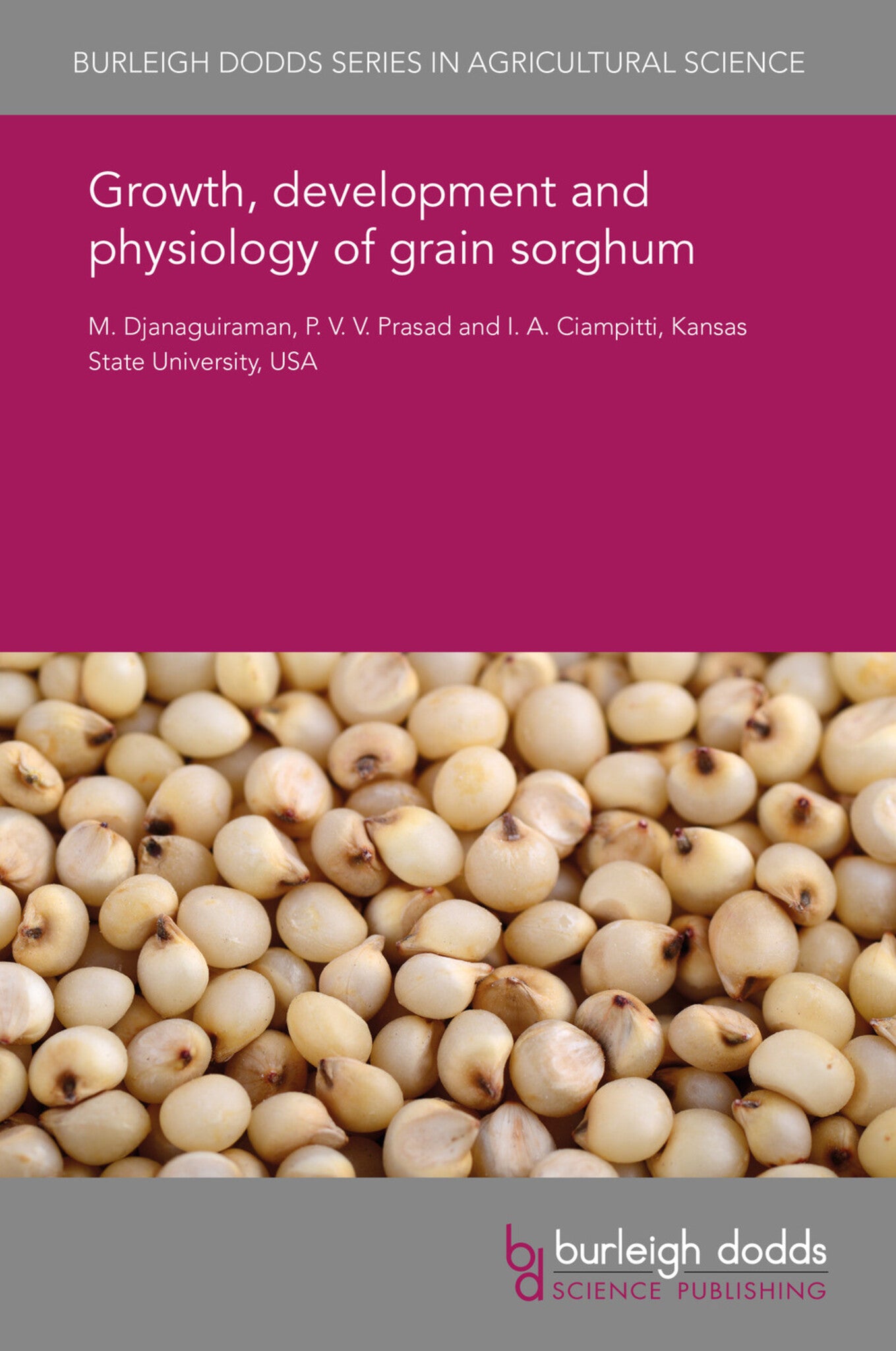We're sorry. An error has occurred
Please cancel or retry.
Growth, development and physiology of grain sorghum
Regular price
£25.00
Sale price
£25.00
Regular price
£25.00
Unit price
/
per
Sale
Sold out
Re-stocking soon
A thorough understanding of how grain sorghum develops is essential in determining how best to manage this crop. Grain sorghum has three predictable phases of growth: vegetative (planting to panicl...
Read More

Some error occured while loading the Quick View. Please close the Quick View and try reloading the page.
Couldn't load pickup availability
- Format:
-
02 April 2018

A thorough understanding of how grain sorghum develops is essential in determining how best to manage this crop. Grain sorghum has three predictable phases of growth: vegetative (planting to panicle initiation); reproductive (panicle initiation to flowering) and grain filling (after flowering to maturity). This chapter describes each of the phases in detail, observing how each stage is affected by factors such as genotype, temperature and photoperiod. Climatic conditions for optimal growth, as well as the effects and physiological basis of drought, high temperature and elevated carbon dioxide tolerance, are discussed. Due to climate change, sorghum-producing areas are facing increased exposure to water deficits and extreme temperatures, making comprehension of plant response to environmental stresses even more necessary. It is concluded that the use of high-yielding varieties and proper management practices will be essential to the future of this crop.

Price: £25.00
Publisher: Burleigh Dodds Science Publishing
Imprint: Burleigh Dodds Science Publishing
Series: Burleigh Dodds Series in Agricultural Science
Publication Date:
02 April 2018
ISBN: 9781838795306
Format: eBook
BISACs:
TECHNOLOGY & ENGINEERING / Agriculture / Sustainable Agriculture, Agronomy and crop production, TECHNOLOGY & ENGINEERING / Agriculture / Agronomy / Crop Science, TECHNOLOGY & ENGINEERING / Agriculture / Agronomy / General, Botany and plant sciences, Sustainable agriculture

1 Introduction 2 Origin, spread and adaptation 3 Botany 4 Growth and development 5 Climatic requirements 6 Conclusion and future trends 7 Acknowledgements 8 References



